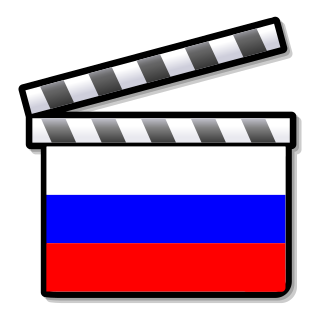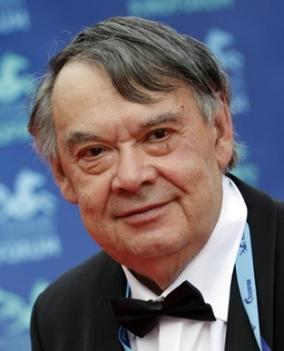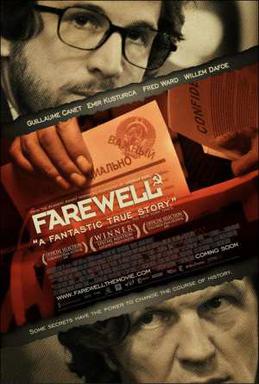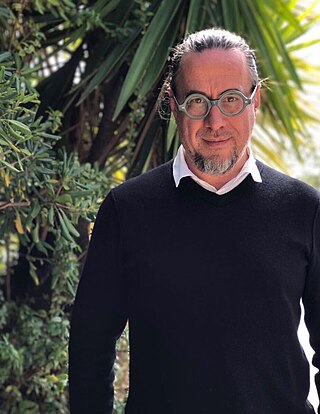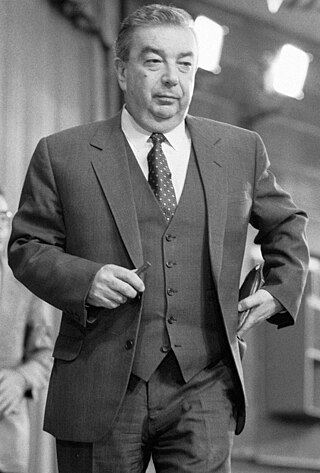Complex installations have been an integral part of the project since the Institute functioned during the shooting, creating immersive experiences for visitors and residents. [103] [104] [105]
Berlin. Preparation of the release and its cancellation
For the film screening in Berlin, it was planned to create a replica of the Berlin Wall; the event was supposed to be the first in a series Dau. Freedom (Berlin) - Dau. Equality (Paris) - Dau. Fraternity (London), [106] [107] and was planned with the support and participation of directors Tom Tykwer and Romeo Castellucci, artists Marina Abramović, Carsten Höller and Ai Weiwei, musicians Teodor Currentzis, Brian Eno, Robert Del Naja and Massive Attack, politicians Michael Müller, the Governing Mayor of Berlin, and Monika Grütters, the Federal Government Commissioner for Culture and the Media. The concept was to rebuild a part of the Berlin wall to create ‘a closed-off mini-state, complete with visa checks for visitors’. [108] Upon entering the venue, visitors were to undergo a body search procedure by the security composed of the Israeli military men; on this closed territory visitors were to immerse into performances and concerts of artists including Romeo Castellucci, Carsten Höller, Massive Attack and in particular a performance of Marina Abramović and Teodor Currentzis, whose participants were to go through the washing procedure (a reference to the gas chambers under the guise of a shower in concentration camps). [109] The event was supposed to end with a ritual destruction of The Wall with each participant to be offered to carry a piece of the wall with them. [110]
In September 2018 the city authorities cancelled the event, referring to safety and technical issues. [111] [112] The cancellation was followed by a discussion: Fanny Ardant, Isabelle Adjani, Robert del Naja, Willem Dafoe, Gérard Depardieu, Brian Eno, Ruth Mackenzie, Kristin Scott Thomas, Hanna Schygulla, Sasha Waltz, Tom Tykwer and other artists, directors, curators, politicians, producers spoke publicly in support of the project [113] and against the opinion that it was not acceptable as Berliners ‘had had this Wall for enough time’. [114]
Release in Paris
Films created from the material filmed in the Institute were released for the first time in Paris between January 25 and February 17, 2019, with the support of the City Hall of Paris and executive producer Martine d'Anglejan-Chatillon. [115] Visitors of the Paris event also had the opportunity to watch actual rushes, exploring Dau.Digital. [116] [117]
The release was hosted by Châtelet Theater and Théâtre de la Ville that both became venues for Serguey Diaghilev's Russian Seasons a century earlier, [118] as well as by Centre Pompidou that housed an installation reconstructing an apartment at the Institute and inhabited by the characters of the project. [119] The museum also provided contemporary art works by Soviet and Russian artists of 1950s-2000s from its collection “Kollektsia!" (2016) to be used as a part of an installation in the theatres. [120] Among the exhibited works there were those by Oscar Rabin, Grisha Bruskin, Sergey Bugaev "Afrika", Erik Bulatov and others. [121] [122]
The initial plan to connect the two theaters with a bridge did not come true, and the theatre buildings and the Pompidou Museum building were connected by a projection of red light lines forming a triangle instead - an installation was inspired by the Russian avant-garde of the 1920s. [123] [124] [125] [126] [127] [128] The connection between the project, the Paris premiere in particular, and the art of avant-garde was also created by the design of the space in the Châtelet Theater by the artists Olga Gurevich, Alexandra Smolina, Boris Shapovalov. [129] [130] [131] [132]
To access the event visitors had to obtain a DAU visa - 6 hours, 24 hours or an unlimited one, [133] [134] When “applying” for a visa, the visitor was asked to answer personal questions (“Have you felt used in your relationships”?). [135]
The space of the theaters was divided into zones (“Motherhood”, “Communism”, “Revolution”, etc.). [136]
Screenings of the films (without titles, but numbered [137] ), conferences, performances, concerts, shamanic rituals were simultaneously held at the venues; it was not possible to learn about the schedule in advance - the principle of uncertainty and constant metamorphosis, offering the visitor an unexpected encounter rather than regular format and experience, became part of the concept of the project. [138] [139] [140] [141]
In accordance with this concept and as part of the project, performances by renowned artists were held incognito, without posters or ads. [142] During Paris events, Théâtre du Châtelet and Théâtre de la Ville hosted Teodor Currentzis and MusicAeterna, Jazz Aeterna, and TrigolOS, musicians Mikhail Rudy, Tatiana Grindenko, Vladimir Martynov, Vladimir Tarasov, Mikhail Mordvinov, Dmitry Uvarov, Vangelino Currentzis, Marko Nikodievich, Leonid Fedorov, Vladimir Volkov, singer Sergey Starostin, opera singer Ekaterina Shcherbachenko, singer and performer Arca, Robert Del Naja (Massive Attack), and Brian Eno, who developed a bespoke acoustic architecture for DAU. Also, performances of Sasha Waltz and her dance troupe, as well as installations of Romeo Castellucci and Philippe Parreno, took place in different DAU spaces. Writer Jonathan Littell, futurologist Real Miller, professor of physics and string theorist Nikita Nekrasov, writer and social critic Evgeny Morozov, photographer Reza Deghati, biophysicist prof. Sonia Contera, writer Alexander Etkind, and others took part in the DAU conferences in Paris. [143]
The musical installations shaping the event's soundscape, produced by Vangelino Kurenzis and Damien Quintard, included works by Brian Eno and Robert del Naja. [144]
An important part of the visitors' experience was also The Shitty Hole bar, buffets (in particular the "porn buffet") and a canteen with a Soviet menu where prices changed randomly throughout the day. [145] [146]
Another element of the installation was a souvenir shop, referring to Soviet village shops (cans, cigarettes, sink plungers, petroleum lamps, condoms, rolling pins, etc.), also selling the printed products of the project — photographs, books-transcriptions of the characters’ conversations. [147] [148] [149]
At the Théâtre de la Ville one could visit a reconstructed Soviet communal apartment, with performers-residents living there around the clock, and Altai shamans performing rituals; works from the Centre Pompidou were also exhibited in this space, in particular Sergey Bugaev "Afrika"'s “John Cage hands over the banner of socialist competition to Kuryokhin”. [150] [151] [152]
The venue was also dotted by waxwork figures of DAU characters. [153] [154] [155] [156]
Round-the-clock public screenings of the films were accompanied by the sessions of ‘active listening’ for visitors with priests, pastors, rabbis, social workers and doctors as a counterpart [157] With visitors’ permission, conversations were recorded. [158]
According to media reports, from January 25 to February 17, 2019, about 40 thousand people visited the DAU project in Paris. [159]




